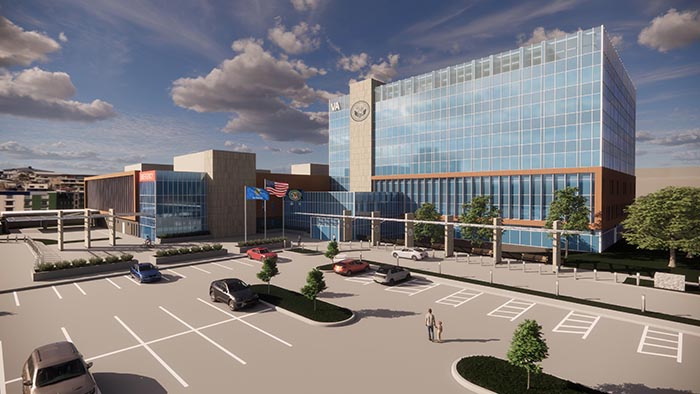
Providing Benefits Through Adaptive Reuse of Federal Assets
By Col. Aaron Wilt, M.SAME, USAF (Ret.), and Kim Cowman, P.E., LEED AP, M.SAME
Reconfiguring existing sites or buildings for a new mission has many inherent advantages to solve challenges that face federal entities, but key considerations need to be accounted for in order to maximize value.
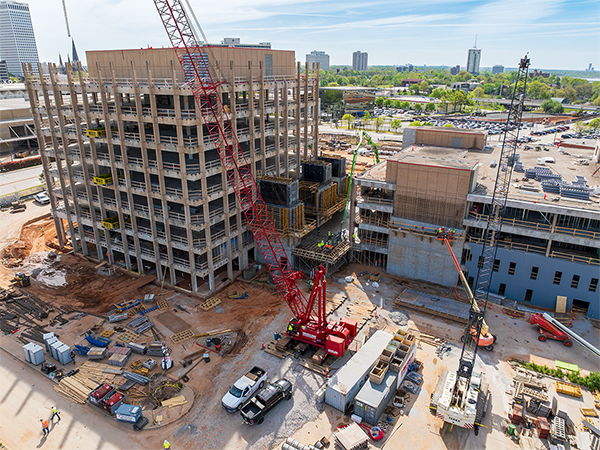
With an aging building inventory and rapidly evolving mission needs, many federal facilities could benefit from a reconsideration of highest and best use. Retrofitting existing buildings for something other than originally intended offers options for better achieving operational and mission objectives, especially when combined with exploring opportunities for adaptive design, cost, and performance efficiency through upgraded systems.
Some segments of the private sector and local governments have embraced adaptive reuse. While public sector programs have been slower to adopt it, in part, because of the complexity of mission requirements, speed to market, and procurement challenges, recent projects carried out at the federal level showcase how adaptive reuse can address the competing challenges of aging infrastructure, performance limitations, and funding.
Adaptive reuse offers a promising alternative for repurposing the government’s aging building inventory and addressing both fiscal limitations and operational challenges.
The Department of Veterans Affairs has initiated a high-profile, large-scale adaptive reuse project for a new Veterans Hospital in Tulsa, Okla. The work will convert a pair of 50-year-old office buildings totaling 295,000-ft² into a modern inpatient hospital. The investment showcases the potential solutions (and challenges) of repurposing an existing facility for a highly technical use. Additionally, this hospital is utilizing the Communities Helping Invest through Property and Improvements Needed for Veterans Act of 2016 (CHIP IN Act), a pilot effort to allow the agency to accept donations from non-federal entities.
Transforming an outdated building into a healthcare-ready facility reinforces both readiness and community impact. Specific challenges for adaptive reuse, however, depend on the existing building and its new use. Often, a building has an outdated design—with challenges spanning from a lack of compliance with current codes to no considerations for modern technology. There can also be difficulties related to upgrading aging or poorly maintained facilities.
Mission Adaptation
The private sector provides proof that obsolete or underutilized facilities can be repurposed into high-tech, high-performance facilities of the future. In Minneapolis, for instance, Xcel Energy successfully converted a parking garage and storage facility into a sophisticated laboratory as part of a 313,000-ft² campus renewal. The space includes analytical testing rooms, offices, and a fleet maintenance facility, all fully electrified and designed to meet long-term performance goals. Government owners, including the Department of Defense, can do the same—converting aging inventory into facilities that will serve evolving mission needs for decades to come. This real estate recycling can also optimize funding streams more creatively, in the right circumstances.
With good design and a solutions-focused approach, military-unique facility challenges can be overcome as well.
For the Veterans Affairs hospital project in Tulsa, the design team worked around a structure that was not originally designed for healthcare. This created a variety of obstacles and seismic deficiencies. To overcome these challenges, several innovative solutions needed to be implemented.
- Existing building upgrades focused on seismic, code, and envelope performance.
- Introduced a structural “mast” for improved lateral bracing and structural stability for seismic upgrade because of the new use and its Code Importance Factor.
- Pushed bracing to the exterior and reskinned the exterior for a continuous weather barrier, enhancing energy efficiency, thermal performance, and space planning efficiency.
- Improved constructability for slab extension, extending building life and enhancing aesthetics.
The decision to proceed with adaptive reuse in Tulsa had measurable benefits, including cost savings and energy efficiency.
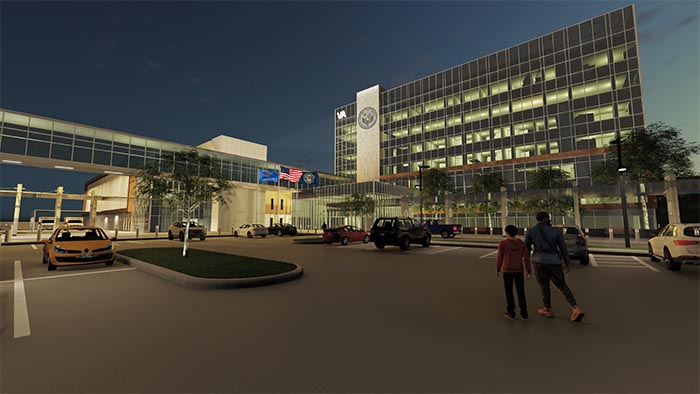
Making Determinations
Not every installation or military facility is a candidate for adaptive reuse. A thorough evaluation of building systems is crucial. Some aspects are likely to have shortcomings. This upfront assessment examines site infrastructure and accessibility to pinpoint necessary improvements and repairs early in a project. By doing so, this phase highlights the extent of the modifications needed and assists leadership in effectively prioritizing and identifying resources from the beginning.
Determining which existing materials and structural components can be repurposed is essential for reducing project timelines, costs, and operational impacts. Certain deficiencies, such as an aging HVAC system, are easily overcome. Others, like an issue with structural integrity, might disqualify the facility for adaptive reuse consideration.
The next step is to assess the new mission requirements of the building. For example, a healthcare facility may need significantly upgraded air filtering or ventilation, while a military asset may require enhanced security and unique functional space.

Finally, determine whether the gaps between the existing building function and the needs of the future use can be bridged. For the hospital project in Tulsa, the challenges included an existing floor-to-floor height lower than what would be considered standard for a new hospital design. The design team was able to maximize the existing space and make it work through careful consideration of mechanical equipment locations and utility routing strategies. With good design and a solutions-focused approach, military-unique facility challenges can be overcome as well.
Maximizing Value
Adaptive reuse offers a promising alternative for repurposing the government’s aging building inventory and addressing both fiscal limitations and operational challenges. With retrofitting, agencies can achieve modern facilities that comply with codes and performance goals, while optimizing resources.
Success stories from the private sector and pioneering federal projects like the new Veterans Hospital in Tulsa underscore the potential of adaptive reuse in overcoming technical hurdles and maximizing value. By adopting this approach, the Defense Department can ensure its facilities are not only equipped for today’s mission needs, but also resource-efficient and adaptable for the challenges of the future.
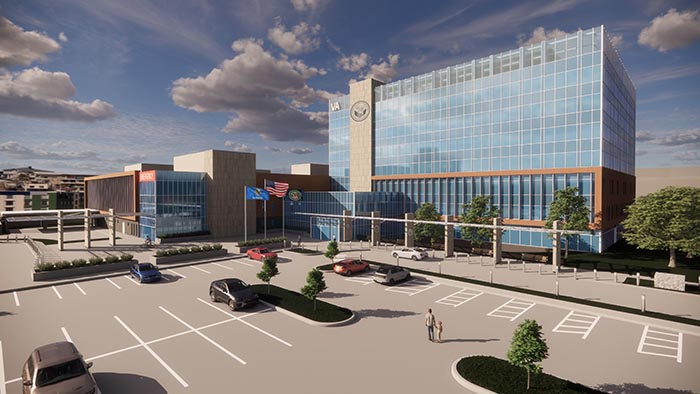
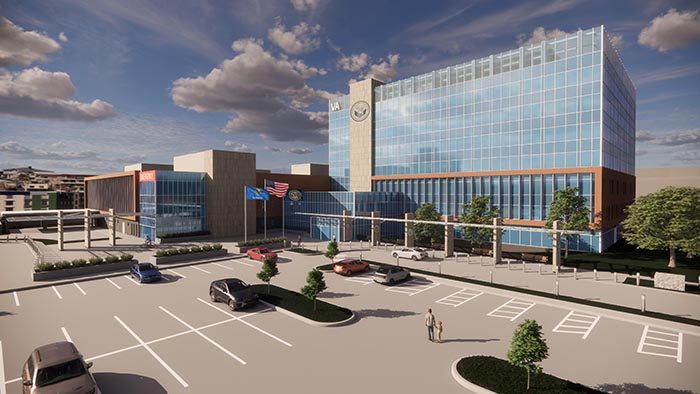
Return on Investment
More than other government owners, the Department of Defense, with more than 500,000 buildings and structures at over 500 installations, including both very remote locations and also some highly constrained sites, faces unique facility replacement challenges, which adaptive reuse may be able to help effectively tackle.
Aging Building Inventory. Many defense facilities are outdated and could be in need of modernization. Adaptive reuse enables the client and users to update these structures to modern standards, extending their useful life while aligning to their current and future operational objectives. It can also maintain historical or culturally significant facilities longer than they would otherwise be in service. Given the number of older buildings on military bases, adaptive reuse could be a win-win option for cost-effective preservation.
Cost Efficiency. New construction can be a more expensive course of action and can impact schedule or procurement cycles, as well as invite more complicated approval authorities. Adaptive reuse provides a cost-effective alternative, which can enable the department to more effectively meet space and performance needs within tighter budgets. Upgraded systems, that integrate the latest technologies, will save costs over the long term through better performance.
Long-Term Adaptation and Reduced Risk. Adaptive reuse can enhance resilience by updating older facilities to modern safety, energy, and performance standards. This approach minimizes the risk of future costly retrofits while delivering operational capabilities with limited resources. By reusing existing building structures and architectural components, owners may be able to expedite project timelines and reduce the logistics challenges of transporting construction supplies and disposing of demolition materials.
Regulatory Compliance Pressure. The Defense Department must meet increasingly stringent operational and security standards to sustain weapon systems and warfighter readiness. Adaptive reuse offers a compliant alternative to retrofitting existing structures that meets federal regulations and carries a reduced fiscal footprint.
Backlog of Real Property Deferred Maintenance and Repair. Compounded by budget constraints and an aging building inventory, the military services face an ever-growing backlog of required maintenance and repair work. According to FY2023 annual financial reports, the Department of the Air Force has a $46.8 billion backlog and the Department of the Navy has a $37.2 billion backlog of deferred maintenance and repair requirements. Adaptive reuse can help address this risk through better alignment with modern missions.
Col. Aaron Wilt, M.SAME, USAF (Ret.), is Federal Account Lead, and Kim Cowman, P.E., LEED AP, M.SAME, is National Director of Engineering, LEO A DALY. They can be reached at anwilt@leoadaly.com; and krcowman@leoadaly.com.
Published in the March-April 2025 issue of The Military Engineer
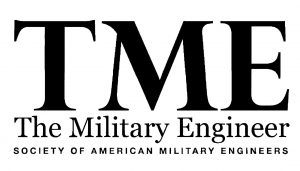
Check Out Related Articles From TME
-
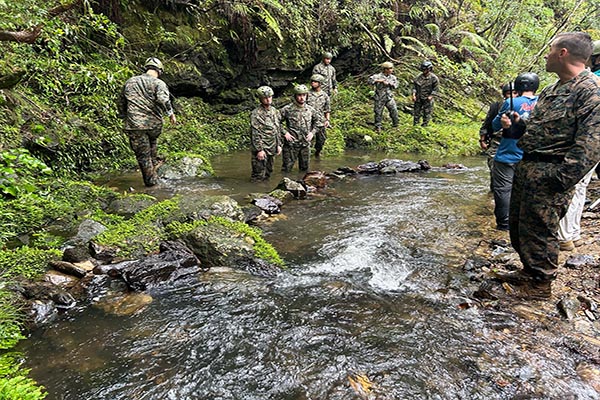
Deploying Renewable Generation Through Small-Scale Hydropower
A field demonstration and ongoing investigation of modular hydrokinetic turbines by the U.S. Army Engineer Research & Development Center’s Construction Engineering Research Laboratory illustrates the potential applicability for using the technology on military deployments. -
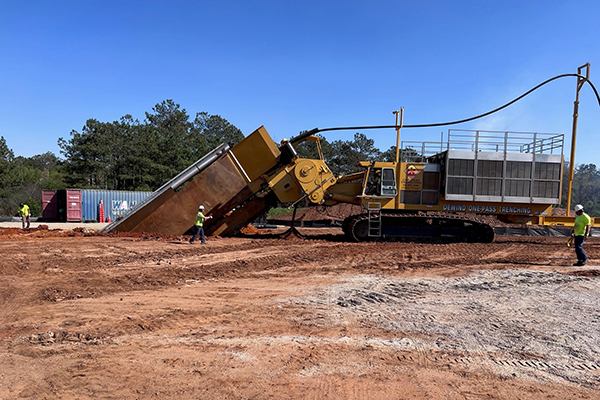
Rethinking Traditional Treatment Systems for PFAS Remediation
At two U.S. Air Force bases impacted by historical releases of aqueous film-forming foam, innovative methods in treating PFAS in both surface water and groundwater provide examples of success in safeguarding health for military personnel and nearby communities. -
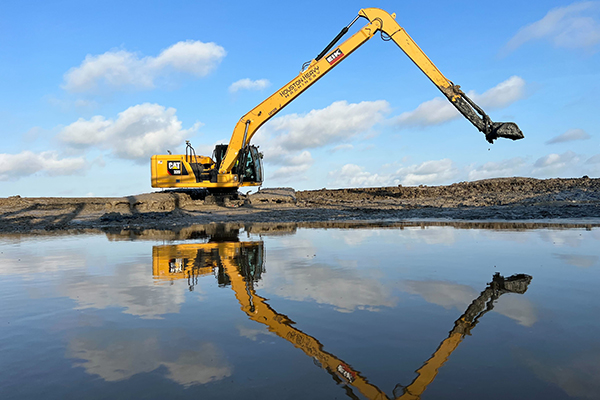
Tackling Restoration Projects With Amphibious Excavators
When faced with soft and wet underfoot conditions, such as at a recent channel dewatering, excavation, and repair project for USACE Galveston District, amphibious excavators offer a scalable way to contour difficult site characteristics. -

Big Job, Small Solutions: Completing a Complex Remediation in Remote Alaska
At a remote federal remediation site in south-central Alaska, inaccessible by road, barge, or large planes, leveraging the local community and a fleet of snowmobiles and small watercraft allowed for 1,100 bags of contaminated soil to be transported for offsite disposal. -
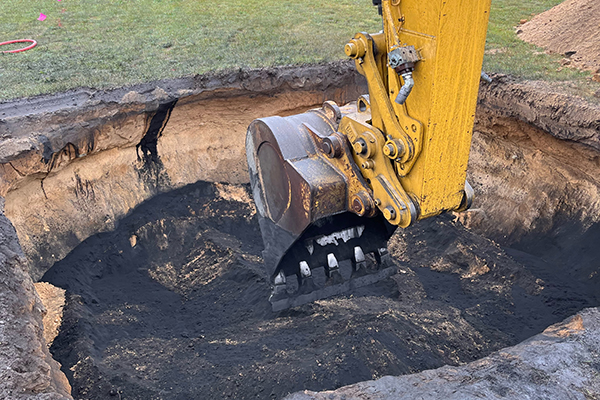
Regenesis Offers Full-Spectrum PFAS Remediation
For project stakeholders and remediation managers confronted with PFAS, Regenesis demonstrates why in situ treatment using Regenesis’ PlumeStop® colloidal activated carbon (CAC) is a game changer. -
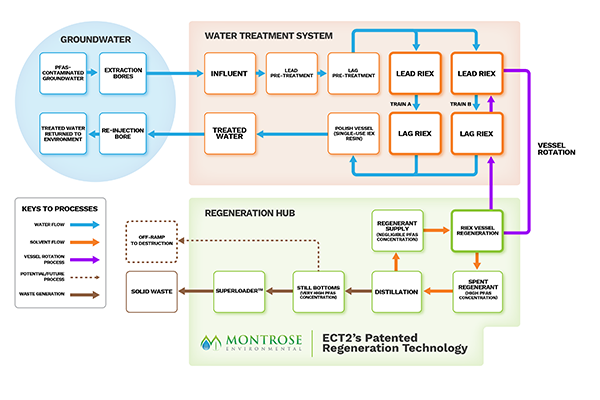
100 Percent PFAS Compliance with Regenerable Ion Exchange Resin
The operational success of a RIEX system spotlights its successful approach to combating PFAS in an effective and economical manner. (Sponsored Content)
